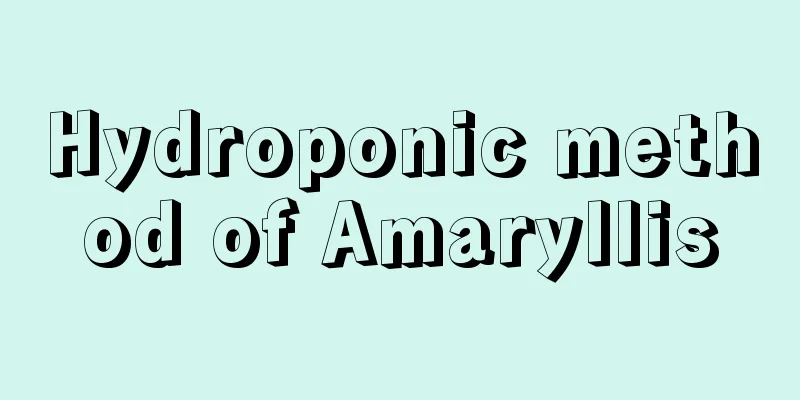Hydroponic method of Amaryllis

Hydroponics MethodBall SelectionThe key to the success of hydroponics of Amaryllis lies in the selection of bulbs. Usually choose bulbs that are more than 3 years old (bulb size is about 6 cm). Cut off the leaves before the frost in autumn or remove them after they turn yellow naturally. Control water appropriately to promote dormancy and allow the bulbs to fully rest in winter, which is conducive to flowering. ColonizationIn spring, after the bulbs have hibernated, soak the bulbs in a permanganate solution to remove old roots and other impurities, and place them in a container for growing daffodils. The water should cover the bulbs by 1/3, and put a little coarse sand or pebbles at the bottom of the container to better fix the new roots. If the hydroponic plants are used as wall hangings, there is no need to put sand at the bottom of the container. transplantThe bulb of Amaryllis grows many roots. When it reaches 0.5 cm, the plant can be moved to a clean hydroponic container (hydroponic novices should try to choose professional containers, which are easier to grow). A regular hydroponic container will hold the plant upright. The water should not be too deep, and it is best to submerge half of the bulb. After transplanting, place it in a sunny and well-ventilated place. Water cultureTemperature -20~25℃The most suitable temperature for the growth of Amaryllis is 20~25℃. The temperature for potted and hydroponic cultivation is roughly the same, and the temperature cannot be lower than 15℃. When the temperature is low, Amaryllis grows slowly and blooms later! Change water frequentlyCheck the hydroponic container regularly and change the water in time. Change the water every 2 to 3 days in the early stage of hydroponics, and every 4 to 5 days after one month. The water level in the container should be kept moderate and consistent. Liquid fertilizerTo make Amaryllis grow stronger, apply fertilizer in time when the leaves grow to 2 to 3 cm, and apply top dressing once every 10 to 20 days. You can add urea solution or potassium dihydrogen phosphate solution when changing the water. Try to choose liquid fertilizer, which is easier for the plants to absorb. |
<<: Hydroponic cuttings of jasmine
>>: Method of water-inserting roses
Recommend
How to fertilize orchids with sheep manure
1. Sheep manure can be used as fertilizer Using s...
When to plant tomatoes
1. Sowing time The time for sowing tomatoes is ve...
What to do if the peach tree grows too tall
What does it look like when a peach tree grows to...
How to care for dahlias in winter
Preparations before winter Pruning Dahlias will g...
Maintenance methods of Jiyulu in four seasons
Spring maintenance The temperature is suitable in...
Is it okay to eat wax apple directly?
How to eat Eat directly First of all, the simples...
When is the best month to repot Kalanchoe?
The leaves of Kalanchoe are large and shiny, with...
When to plant gladiolus bulbs
1. Planting time Generally speaking, it will prod...
What flowers are suitable for Labor Day?
1. Gerbera (1) Introduction: This plant is also c...
Where is the sweet-scented osmanthus tree suitable for growing?
Growth habits of osmanthus trees The sweet-scente...
The difference between lucky bamboo and Guanyin bamboo
1. Difference in appearance Lucky bamboo is a per...
What flowers are suitable for growing in Fangchenggang? What are the city flowers and trees?
1. Climate characteristics of Fangchenggang Fangc...
How to grow bluebird flowers
1. Breeding environment 1. Watering: It is not dr...
What are the varieties of orchids?
1. Spring orchid Spring orchid blooms from Januar...
When does the hyacinthus tree bloom?
Flowering period It takes a period of care for th...









